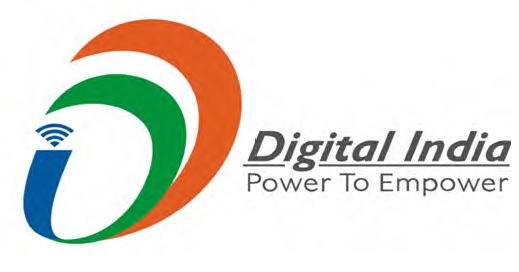By Devyani Bhushan
The National Optical Fibre Network (NOFN) was started as an ambitious pan-India programme, to trigger a broadband revolution in rural areas, and augment network infrastructure across the country. Like all such programmes, initiated with much fan-fare, during United Progressive Alliance (UPA) Government, this programme also started to meander after its launch. The pace of implementation of the programme slowed down and original objectives appeared to have been lost sight of.
In 2011, the Government of India approved creation of a Special Purpose Vehicle (SPV) for National Optical Fibre Network (NOFN). This SPV – Bharat Broadband Network Limited (BBNL) was created to implement and coordinate the NOFN project. The pilot phase of the project was expected to be completed in 3 Blocks and 59 Gram Panchayats by October, 2012. This deadline was completely missed. The first phase of NOFN project, covering 1 lakh Gram Panchayats was scheduled to be completed by 31st March, 2014. Again this deadline was also missed. The project was expected to finally conclude by providing network connectivity to all 2,50,000 Gram Panchayats by September, 2015. Needless to say, even this milestone remained a distant dream.
With the coming to power of the National Democratic Alliance (NDA) Government, PM Modi initiated the flagship programme “Digital India”. One of the mandates of Digital India programme was to connect every village with internet and provide them community level access to video, voice, data and content services in the sphere of e-governance, education, health and utility services. With this objective in mind, the National Optical Fibre Network (NOFN) was completely revamped and put on fast track to ensure that all 2,50,000 Gram Panchayats in the country are provided 2 Mbps to 100 Mbps connectivity within a defined timeframe. Based on NOFN experiences, a newer, updated and upgraded version – Bharat Net was conceived as a nation-wide Bharat Broadband Network. The vision of Bharat Net is to be a project of national importance and to establish by 2017, a highly scalable network infrastructure accessible on a non-discriminatory basis. Such a network infrastructure will provide affordable broadband connectivity to rural India and would realize the PM’s vision of Digital India in partnership with States and the private sector.
The entire project is being funded by Universal Service Obligation Fund (USOF), which was set up for improving telecom services in rural and remote areas of the country. The present Government has substantially accelerated the speed of execution of Bharat Net. This is reflected in the fact that on December, 2015, 76,624 kms of optical fibre was laid and only 32,272 Gram Panchayats were provided connectivity. By February, 2017, optical fibre has been laid in 1,55,000 kms., which is an increase of 102% and 80,000 Gram Panchayats have been provided with optical fibre network, which is an increase of 147%.
Reiterating the Central Government’s resolve in this regard, the Union Finance Minister in his Budget Speech on 1st February, 2017 said – “Under the Bharat Net Project, OFC has been laid in 1,55,000 kms. I have stepped up the allocation for Bharat Net Project to Rs.10,000 crores in 2017-18. By the end of 2017-18, high speed broadband connectivity on optical fibre will be available in more than 1,50,000 Gram Panchayats, with wi-fi hot spots and access to digital services at low tariffs. A DigiGaon initiative will be launched to provide tele-medicine, education and skills through digital technology”
Replying to a question in Rajya Sabha, Telecom Minister, Manoj Sinha told the House that the Government accords top most priority to the completion of Bharat Net project within the prescribed time period. He also underlined the Government’s mandate to connect all 2,50,000 Gram Panchayats through optical fibre network by December, 2018. Under Phase-I, the Government would successfully provide optical fibre network to 1 lakh Gram Panchayats by March, 2017. The actual achievement against this target has been 90,027 Gram Panchayats (90% of March 2017 target), till 31st March 2017.
The second phase will provide internet connectivity to all 2,50,000 Gram Panchayats in the country by December 2018. The second phase will also use optical fibre over existing power lines (electricity poles). This would have several advantages such as economical construction, quicker implementation, easy maintenance and utilization of existing power line infrastructure. The Union Government is proactively seeking the cooperation of State Governments and private sector for speedier execution. The Telecom Regulatory Authority of India has recommended public private partnership (PPP) mode for parts of the project. This can be done, if the Government is able to provide to the private promoters the right-of-way (RoW), free from all encumbrances and also provide adequate financial incentives.
As a result of such extensive network coming into operation, the next financial year, 2017-18, would see delivery of e-governance, e-education, e-health, e-banking, internet and other internet based services to a large part of rural India through the 1 lakh Gram Panchayats provided with optical fibre network. Last mile connectivity to rural citizens is proposed to be provided using wi-fi hotspots in Gram Panchayats. Each Gram Panchayat would have about 2 such hotspots. The long term benefits of Bharat Net would be bridging of the “Digital Divide” between Urban and Rural India by provision of expanded internet connectivity, simple, responsive and transparent e-governance as well as quick service delivery and grievance redressal, a boost to e-commerce and e-banking as well as IT enabled education and healthcare delivery to India’s vast rural areas.
(The author is a research scholar working in the area of public policy and is associated with a number of think tanks)
(The views expressed are the author's own and do not necessarily reflect the position of the organisation)

